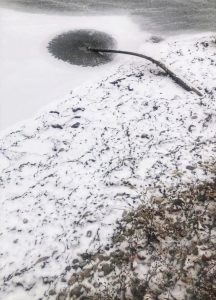Preventative Measures for Pond Lines
Taking proactive steps to protect your pond lines from freezing can save you significant trouble during the winter months. Ensuring that your pond lines are adequately submerged is one of the most effective measures to prevent freezing. Furthermore, any sections above the waterline should be insulated with materials such as dirt, straw bales, or specialized insulating products to provide an extra layer of protection against cold temperatures.
Regular inspections of your pond setup can also help identify any potential issues before they become more severe. Checking the water levels in your pond is critical, especially after dry spells that might lower the water line significantly. By being attentive and addressing these concerns promptly, you can maintain a functional pond line and avoid costly repairs and service fees down the line.
Winter Care for Your Pond
Winter care for ponds is crucial to ensuring their health and functionality. Besides protecting the lines from freezing, it’s also important to monitor the overall condition of your pond through the winter months. Factors such as ice cover can affect the oxygen levels in the water, impacting fish and plant life. Keeping a portion of your pond open can promote gas exchange and better living conditions for aquatic life.
Additionally, consider adding a floating heater or a bubbler to keep a section of the pond free from ice. These devices can help maintain a healthy ecological balance within your pond during winter. By taking these extra steps, you can help ensure that your pond remains a thriving ecosystem, even in colder weather, allowing for easier maintenance when spring arrives.
Signs Your Pond Lines Are Freezing
Recognizing the early signs of frozen pond lines is vital in preventing severe complications. One of the most obvious indicators is a decrease in water flow or pump functionality, which may signal that the lines are compromised. If you notice unusual sounds from the pump or see diminished water output, it’s essential to investigate further to address any potential freezing quickly.
Another relevant sign is the presence of frost or ice buildup around the pond line area. If you observe this, there is a high likelihood that the insulation is inadequate or that portions of the line are exposed to extreme cold. Early detection allows for prompt intervention, whether that means insulating the lines further or taking steps to warm them up, thus protecting your investment and ensuring smooth operation.


0 Comments